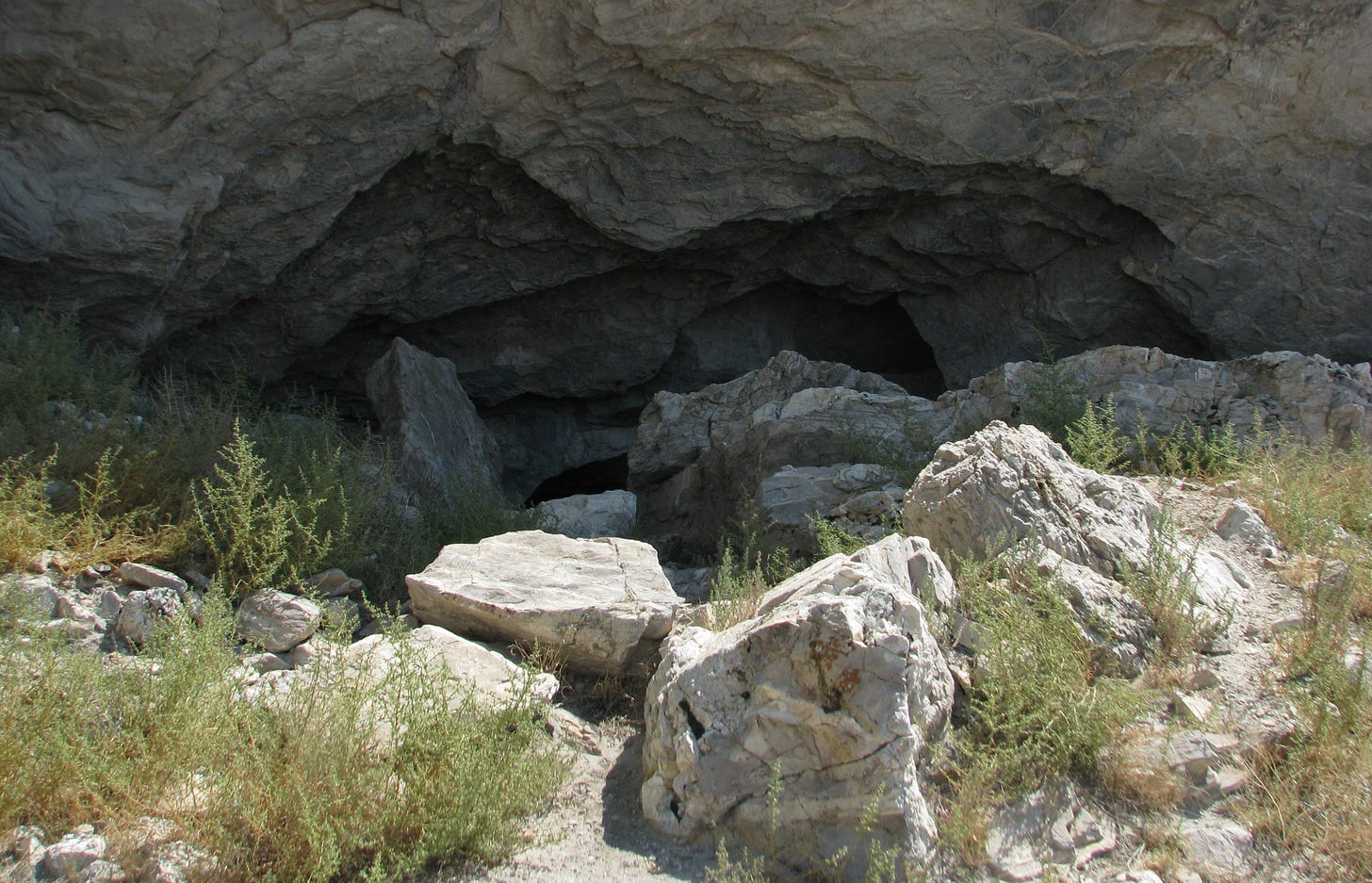The tale of the 126-year old 'Cave Indian'
'Quintus Hopper of Nevada' series: Among the seemingly countless insights uncovered during research for this novel, nothing was more surprising than this 1869 article.
Quintus Hopper of Nevada, published in January 2022, is a historical novel that follows the epic and peculiar life of a frontier newspaper typesetter. As part of my research I made extensive use of newspaper archives and, in this series, I’ll share some of my often surprising findings. Here are history, commentaries and contemporary newspaper articles as they relate to my latest novel. I was researching Treasure Hill, the range that promised to become the next Comstock Lode around 1869. As always, I scoured newspapers for stories concerning American Indians - imagine my surprise when I came across the fantastical story of a one hundred and twenty-six year old Shoshone, known as the ‘Old Cave Indian.’
In the novel, Quintus teams up with another storyteller and together they journey to the latest boomtown called Treasure City. Like so many other such towns, Treasure City grew at an incredible pace, only to become a ghost town a few years later. The wealth that would flow from Treasure Hill was expected to surpass the Comstock Lode. It took no time at all for thousands of men to journey there and soon three towns had grown in the wilderness: Treasure City, Hamilton, and Shermantown.
Quintus and his friend meet, in a most unusual way, an old Indian outside a cave. The article below, published in Shermantown’s White Pine Evening Telegram, is a curious piece with a fairytale-like quality. An ancient Indian, an underground world, a strange death – it was a story that just needed to be woven into the novel.
July 31, 1869
White Pine Evening Telegram, Shermantown
DEATH OF THE “OLDEST INHABITANT.” – The oldest Indian in the Shoshone tribe, and probably one of the oldest beings that lived, died last week near Montezuma, in Patterson District. According to the statement of many of his tribe, he lived “moons” enough to make 126 years of age. His body was found in the center of Cave Valley, near the roadside, by a traveler. The abdomen and entrails were completely gone, having been devoured by crickets and grasshoppers, the body being covered with them at the time it was found. This old Indian had gained the appellation by the white settlers of the “Old Cave Indian.”
It will be remembered that an article appeared in the Telegram a short time since describing the Great Cave of Eastern Nevada (which is located near Montezuma), and of the dread and superstitious horror that the Indians hold it in. It was this old Indian who claimed to have gone far into it, a great many “moons” ago, with a number of his tribe, and that they traveled a long time and finally came to a silvery stream of water, on whose banks grew evergreens and beautiful flowers, and that close by, dwelt “heap Injins” with dwarf ponies and lovely squaws. According to his account, the old Indian did not like to live in the bowels of mother earth, but would rather “chase the antelope on the plain, snare the rabbit, and spear the spotted trout;” so, when all were lost in sleep he stole away, and finally, more dead than alive, reached daylight, and rejoiced.
He was first seen by white men sitting outside of the entrance of this cave, while the heavens were racked with thunder and the rain was falling thick and fast. His dread of it was equal to fear – for the storm had to be blinding, and with it the atmosphere intensely cold, before he would seek shelter. Strange as it may seem, he could always be found at or near it, as if he was its protector. His hair was silvery white, his voice a hacking cough, his form bent as a hunchback, and skeleton poor. Now he has left this world, that has been so long waiting for him to die, and gone to the pleasant hunting grounds of the Great Spirit, and his bones are moldering within sight of the cave he feared so much and loved so well to guard.








